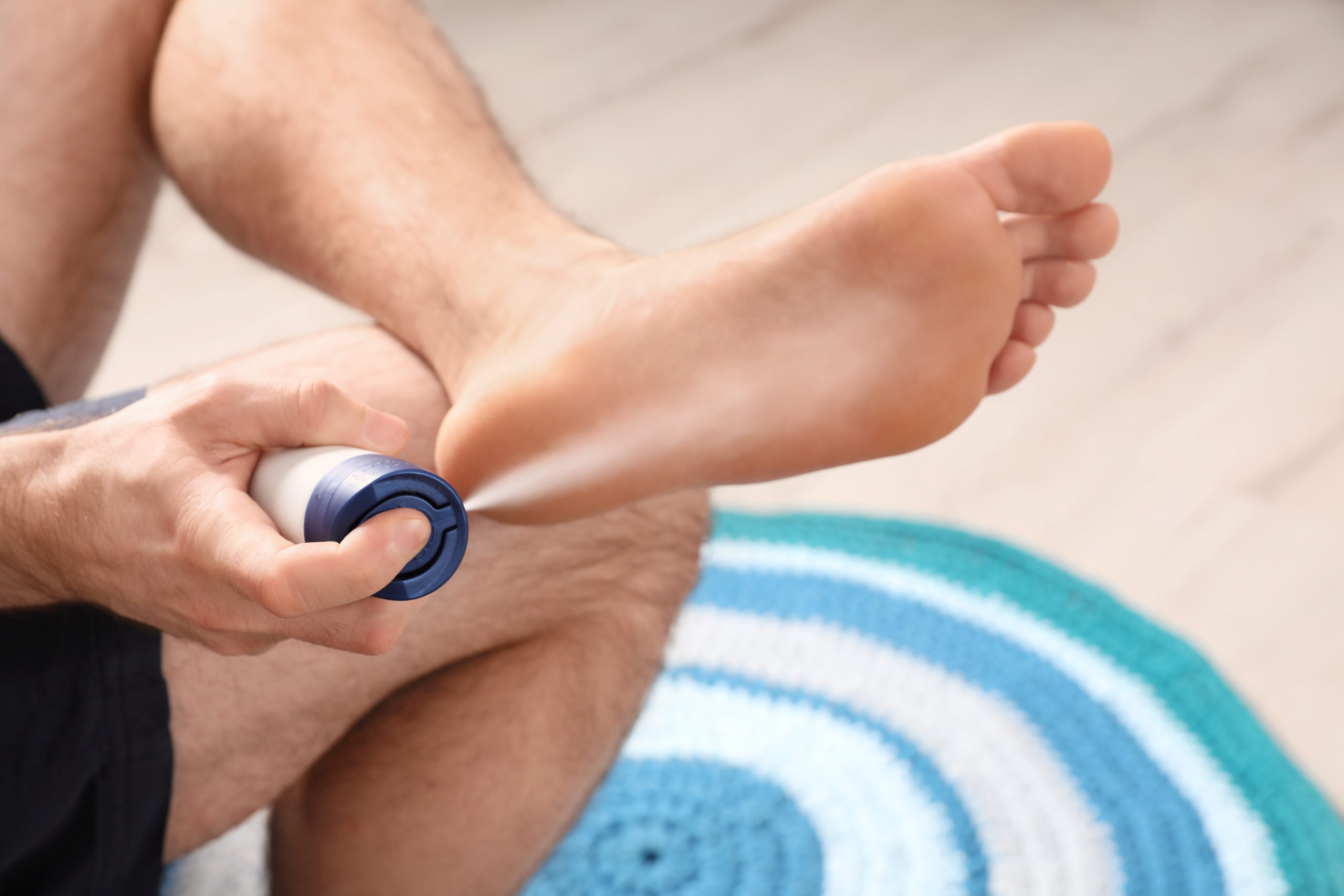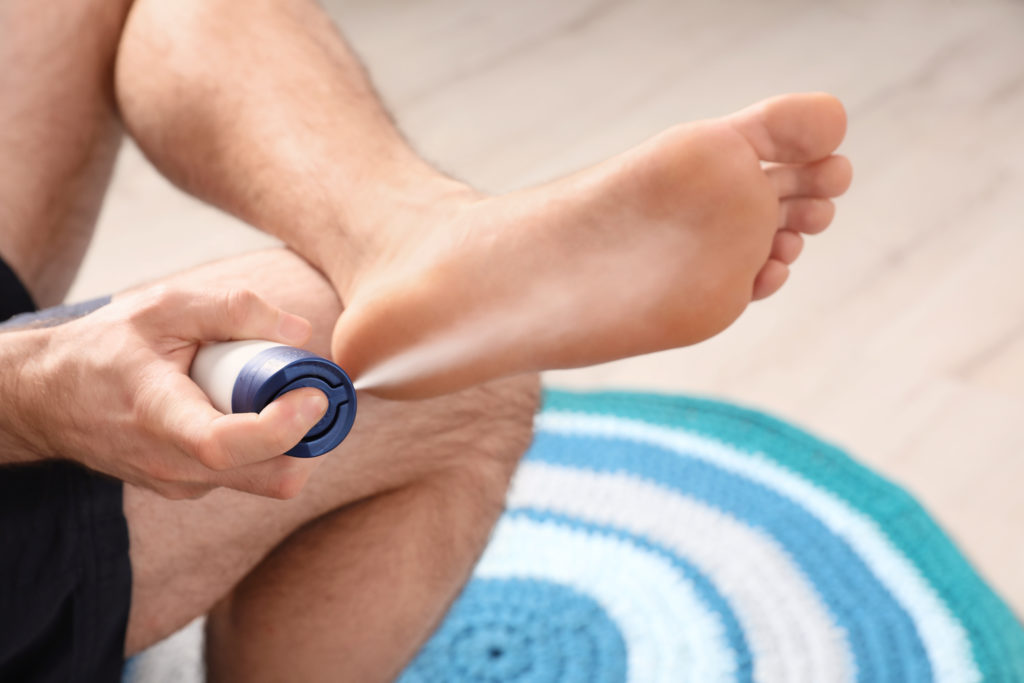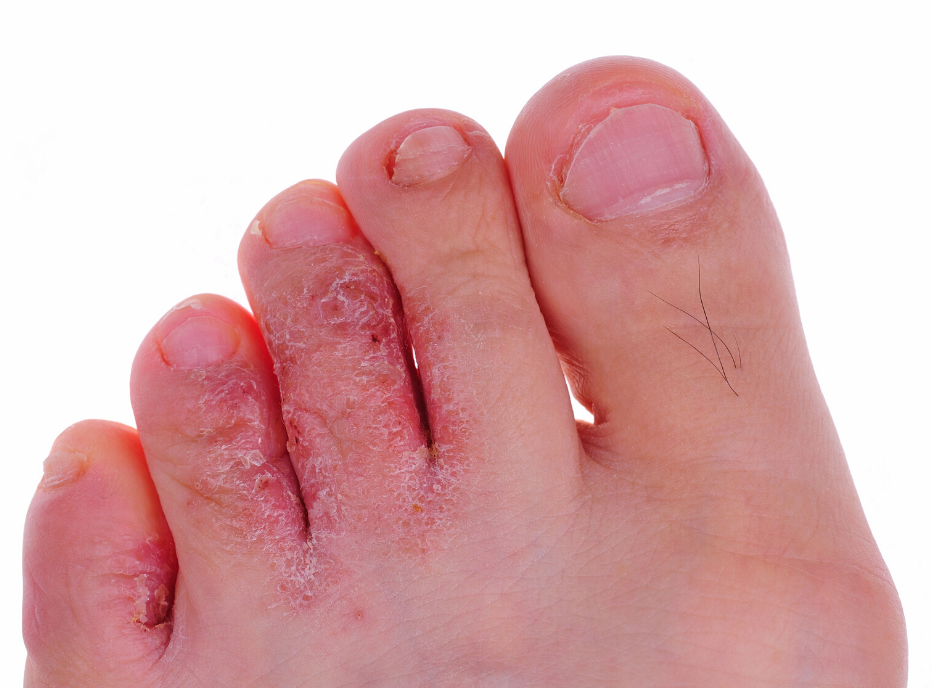
Medically known as hyperhidrosis, this unpleasant condition describes excessive and uncontrollable sweating – mostly in the feet and hands, though it can occur anywhere over the body.
The feet are particularly vulnerable to this problem as we have over 250,000 sweat glands on the feet – and even more if our feet are bigger. When we overheat, our body releases sweat through our feet as part of keeping our temperature at a normal 37°C. While this is completely normal, in approximately 3% of people, this process is amplified, resulting in them constantly sweating through their feet.

What Causes Some People To Sweat Excessively?
No one knows exactly why some people sweat much more than others, but research indicates that this problem does seem to have a strong genetic component. Stress, strenuous physical activity and a build-up of toxins in the body may also contribute to sweaty feet.
If you’ve been on your feet all day, especially in hot shoes like enclosed work boots, or have ‘hot spots’ of high pressure on the soles of your feet then the sweating is likely to be worse – though this is true for anyone. More men tend to be affected than women, and it tends to affect those younger in age.
Are There Any Other Symptoms?
Due to the constant sweating of the feet, the skin is more likely to become macerated, taking on a white, wet appearance as the skin is more vulnerable to breaking down. This makes you more vulnerable to infections, and developing an unpleasant odour associated with fungal infections, bacterial infections, or both.
You may also develop other problems with the skin on your feet, like redness, rashes and itchiness. You’ll need to choose your shoes carefully, as your feet will have a tendency to slip inside the shoes.
Treating & Preventing Excessive Sweating
The first step is maintaining good foot hygiene, and promoting a dry environment as much as possible.
- Choose socks that wick moisture away from the feet, instead of keeping it trapped there. These are usually made of natural or acrylic fibre blends. Avoid cotton socks where possible – while they absorb moisture, they don’t wick it away
- Try wear shoes made of breathable materials as much as possible, and air your feet as much possible
- Try not to wear the same pair of shoes every day where possible – by alternating pairs, you allow the first pair to dry completely instead of still being moist when you put your shoes on
- Address any fungal or bacterial infections that arise immediately
- Use an antibacterial soap as part of your daily routine
- Always dry your feet well – after every shower, swim, when you’ve been out in the rain, or when you feel your feet become wet. Don’t forget the spaces between the toes!
- Use foot powders to promote a dry environment, inside your shoes and socks
- Keep an extra pair of socks on you at all times to change into if needed
Make An Appointment With Your My FootDr Podiatry Team
Your podiatrist can help you manage excessive sweating by forming a management plan and making recommendations of best foot care practices at home. This may include changing your footwear or socks, the use of specific powders or medications, changes to your routine or hygiene habits, and more.
We’ll also address any concurrent problems that have resulted from the sweating, like breakdowns or damage to the skin, Athlete’s foot infections, fungal nail infections, bacterial infections, areas of high pressure on the feet, and more.
In severe cases, a referral for botox may be made to interfere with the nerve signals that go to your sweat glands, to minimise the sweating response.



